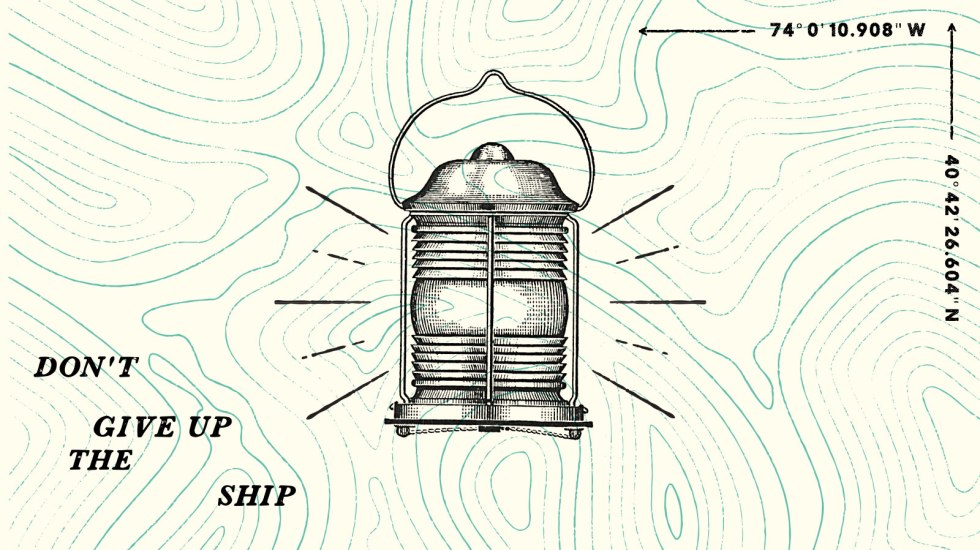How EOS/Traction Is Keeping Us Sane in a Time of Panic

Let me first begin by saying that our situation as a company, industry, nation, planet, and species seems to be changing by the minute, and so the things I’m sharing here today are very “as of now.”
But, here’s what I want to say: I feel very thankful at this moment to have worked hard with my incredible team to implement EOS / Traction at North Street. We’re a creative services, design, and branding studio, but EOS is pretty much applicable to any type of business.
If you aren’t familiar with EOS, it’s shorthand for the Entrepreneurial Operating System and—as detailed in the book Traction by Gino Wickman—it’s essentially a framework of systems, tools, and practices for running a small- to medium-sized entrepreneurial enterprise while maintaining something resembling your sanity (and hair).
The world has been turned upside down by the coronavirus crisis, but our company has not. Yes, things are suddenly very different, uncertain, and sometimes frightening. But, EOS has provided my team with the tools and mindset to push through, to stay operational, and to maybe even learn some new ways of doing things.
Here’s how it’s working for us right now.
1. Open and honest communication
One of the tenets of EOS is to be open and honest with one another. That goes for our team, for our partners, and for our clients as well. In more normal times, this most often comes into play around interpersonal issues. For example, if something somebody does or doesn’t do bothers you or has a negative impact on your ability to do your job, then it’s your responsibility to address the issue in a timely manner and to do so with an open and honest discussion. In these less-than-normal days of pandemic panic, it means that it’s OK for my employees to ask me if their jobs are safe. It’s OK for me to admit that I don’t have all the answers. Because we don’t B.S. each other or beat around the bush, my team knows I’ll come to them ASAP if there’s a problem just as I know they’ll do the same.
2. Cultural Alignment
When NYC closed us up for business, we transformed overnight from an in-person, on-site, brick-and-mortar organization into a fully-distributed team without skipping a beat. I attribute this in large part to EOS’s deep focus on company culture, vision, values, and people. Because we’ve put in the work to develop and nurture a solid culture, it doesn’t really matter that it’s now manifested over Slack and Zoom instead of around the conference table over breakfast tacos (damn, they were yummy). The people and core values components of EOS have been key. We hire, fire, celebrate, and reward based on our core values, and so I know with absolute certainty that each member of my team is fully aligned with the things we regard as important. As a result, no one needs babysitting while working from home. We trust each other to get the job done.
3. Real-time, birds-eye metrics
EOS teaches you to maintain a constantly updated scorecard of critical numbers or KPIs. Our’s lives in a Google Sheets document that we review weekly (at minimum) as a team. These days, I have it open in a browser tab at all times. It’s a mix of lagging and leading indicators—things like revenue and profit (monthly, quarterly, and rolling 12), utilization, AR, etc. mixed with other stuff like the number of employee socials and 1-on-1’s on the calendar. The metrics on the scorecard will differ from organization to organization, but the idea is that—were you to be stranded on a desert island completely isolated from your business—these numbers would be able to tell you precisely how you’re performing on the finance, operations, sales/marketing, and humans/culture fronts. In other words, the scorecard is the heartbeat of your organization. Our ability to access, discuss, and react to these numbers in real time has been a savior during this chaotic time.
4. Substantive and effective meetings
The single biggest impact EOS has had on our organization is the transformation of our internal meetings into highly efficient and effective vehicles for momentum, problem solving, and change. Before EOS, our meetings didn’t produce much at all beyond more meetings and a nebulous list of things to “look into” without anyone tasked with the actual “looking into.” Now, we’re following a fixed format/agenda (different types of meetings have different formats) and we’re concluding with a list of tangible to-dos with people assigned to them…all of this recorded in our project management software so that team members are held accountable and the to-dos actually gets to-done. It’s been a transformative shift for North Street, and perhaps our most valuable asset (other than our people) in the face of this crisis.
Thanks, and stay safe out there.
As a student of EOS and board member of the NYC chapter of the Entrepreneurs’ Organization, I’m highly committed to supporting my fellow business owners. If you’re an entrepreneur and want to talk shop, please reach out at tom@northstreetcreative.com.

About north street
We engineer the thoughtful transformation of great organizations. Our proven process helps us understand what your competitors are doing right — and wrong. Want to learn more? Let’s chat.



























